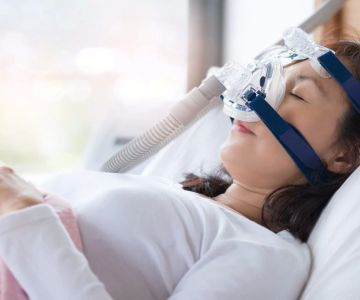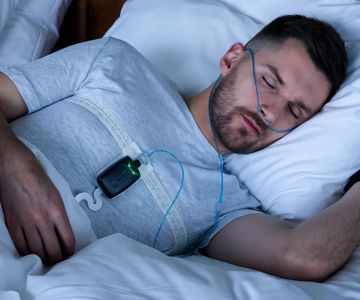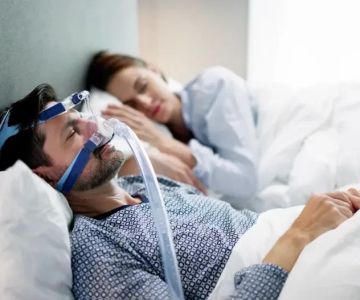Understanding Sleep Study (Polysomnography): An Essential Tool for Diagnosing Sleep Disorders
Quality sleep is a fundamental aspect of health and well-being. However, many people suffer from sleep disorders that significantly impact their lives. A sleep study, medically known as polysomnography, is a comprehensive test used to diagnose these disorders, especially sleep apnea. In this article, we will delve into what a sleep study involves, why it’s crucial, and how it can lead to effective treatment plans. This is especially relevant for American individuals who often face sleep-related health challenges.
What is a Polysomnography?
Polysomnography is a multi-parametric test method used to monitor sleep stages and cycles to identify disruptions associated with sleep disorders. This sleep study requires overnight assessments in a specialized clinic or sleep center, where multiple aspects of sleep are monitored. Parameters such as brain waves, oxygen level in the blood, heart rate, breathing, and eye and leg movements are recorded, providing a comprehensive view of the patient's sleep health.
The test is performed using a variety of sensors placed on the scalp, face, chest, and legs. These sensors feed data into a computer, which interprets the signals to provide insights into sleep quality and irregularities. A polysomnogram is often considered the gold standard in diagnosing conditions like obstructive sleep apnea, insomnia, and narcolepsy, highlighting its critical role in sleep medicine.
Why is Polysomnography Important?
The primary importance of polysomnography lies in its ability to uncover the root causes of sleep disturbances. Many individuals with sleep apnea remain undiagnosed, suffering from symptoms like chronic fatigue, mood swings, and decreased cognitive function. By utilizing a detailed sleep study, healthcare providers can identify the type and severity of the disorder, which aids in tailoring personalized treatment plans.
Sleep studies also provide valuable data for related health conditions. For instance, untreated sleep apnea is associated with a higher risk of cardiovascular diseases, stroke, and diabetes. Thus, a timely diagnosis through polysomnography not only helps manage sleep disorders but also plays a part in overall health management.
Sleep Apnea and Its Relationship with Polysomnography
Sleep apnea is one of the most common disorders diagnosed using polysomnography. It is characterized by repeated interruptions in breathing during sleep, leading to reduced oxygen flow to the brain and other parts of the body. There are three primary types of sleep apnea: obstructive, central, and complex sleep apnea syndrome. Each has distinctive features and implications.
Through extensive sleep monitoring, polysomnography can accurately measure the number of apneic events per hour, categorize the type of sleep apnea, and evaluate its severity. This data is indispensable for crafting a treatment strategy that may include lifestyle changes, CPAP machines, dental devices, or in severe cases, surgery.
How Polysomnography is Conducted: A Step-by-Step Overview
The process of undergoing polysomnography involves several well-defined steps. Initially, a sleep specialist will conduct a preliminary evaluation, explaining the procedure and addressing any concerns or questions. The actual study takes place overnight at a sleep center. Patients are advised to follow their regular routines to ensure the data reflects typical sleep patterns.
Upon arrival, technicians will attach the sensors to the necessary areas on the body. While this might appear intrusive, the procedure is generally painless and non-disruptive. The data collected during the night will then be analyzed, resulting in a comprehensive report that highlights any anomalies and offers a pathway to effective treatment options through resources like Dentistry Toothtruth.
Interpreting Polysomnography Results
Analysis of polysomnography results is usually carried out by a team of sleep specialists. They meticulously assess the data, focusing on factors like apnea-hypopnea index (AHI), sleep stages, and nocturnal arousals. AHI, for instance, quantifies the severity of sleep apnea, with 5-15 events per hour being mild, 16-30 moderate, and over 30 severe.
Interpretation of these results facilitates informed decisions about further treatment. If a dental appliance is recommended, Dentistry Toothtruth offers expertise in custom-fitted devices that alleviate symptoms by repositioning the lower jaw and tongue, enhancing airflow.
The Path from Diagnosis to Treatment
Following a comprehensive diagnosis via polysomnography, the next step is forming a targeted treatment plan. The approach depends on the specifics of the disorder and the patient's personal health needs. Options for addressing sleep apnea, particularly, range from CPAP therapy to innovative dental solutions provided by websites like Dentistry Toothtruth.
Moreover, obtaining a correct diagnosis through sleep studies can help align patient lifestyle with their health goals, encouraging better sleep hygiene and consistent follow-ups to adjust treatments as necessary.
Conclusion: Taking the First Step Towards Better Sleep Health
The understanding and utilization of polysomnography is pivotal for anyone suspected of having a sleep disorder. Recognizing its importance and seeking the right medical consultation can drastically improve an individual's quality of life. If you or a loved one experiences persistent sleep problems, consider undergoing a sleep study to gain insights into underlying issues.
By partnering with experts like Dentistry Toothtruth, you can access innovative dental solutions that complement traditional therapies, ensuring comprehensive care. Don't let sleep disorders affect your life any longer—take charge of your health today.







 Westgate Dental Arts
Westgate Dental Arts Coventry Family Dental
Coventry Family Dental Familia Dental
Familia Dental Dr. Daniel S. Fife, DDS
Dr. Daniel S. Fife, DDS Dentistry At Suburban Square: Michael I. Wollock, DMD
Dentistry At Suburban Square: Michael I. Wollock, DMD Comfort Care Dental
Comfort Care Dental The Importance of Oral Health Education During Pregnancy for a Healthy Pregnancy
The Importance of Oral Health Education During Pregnancy for a Healthy Pregnancy Why Skipping Dental Checkups Can Lead to Bigger Oral Health Problems
Why Skipping Dental Checkups Can Lead to Bigger Oral Health Problems Best Tips for Brushing Your Teeth Properly for Healthy Gums: Essential Techniques for Oral Health
Best Tips for Brushing Your Teeth Properly for Healthy Gums: Essential Techniques for Oral Health Advantages of Porcelain Dental Restorations
Advantages of Porcelain Dental Restorations How Can Diabetes Cause Tooth and Gum Problems? Preventing and Managing Oral Health Issues
How Can Diabetes Cause Tooth and Gum Problems? Preventing and Managing Oral Health Issues Healthy Habits for Promoting Good Oral Health and Hygiene: Tips for a Healthy Smile
Healthy Habits for Promoting Good Oral Health and Hygiene: Tips for a Healthy Smile